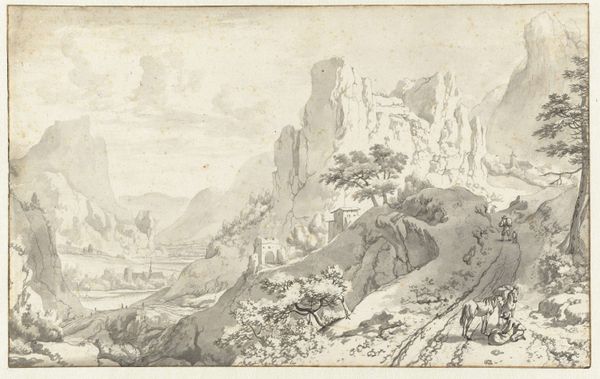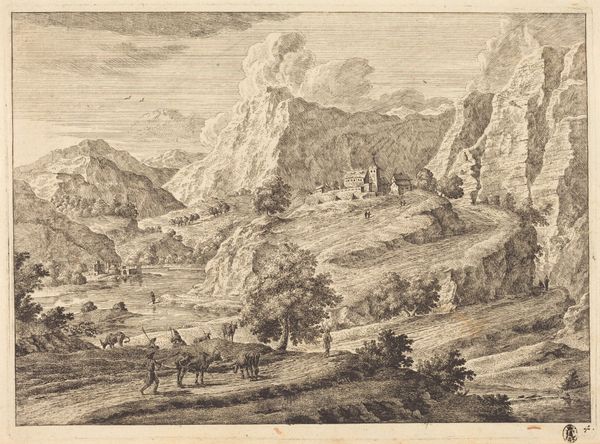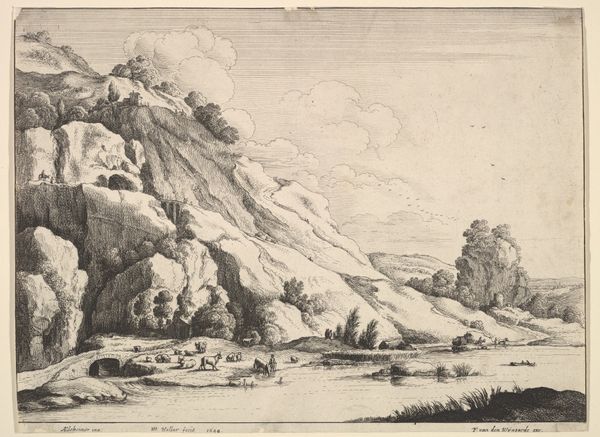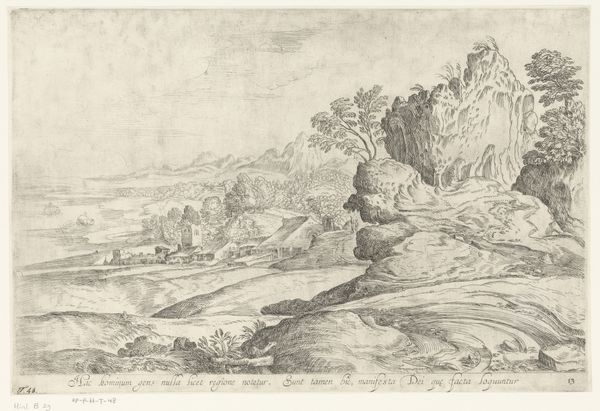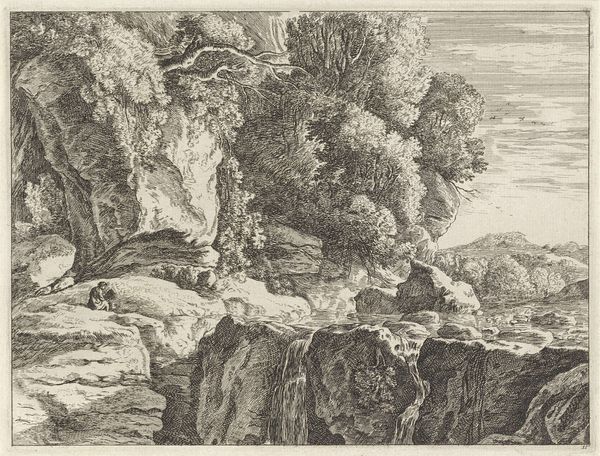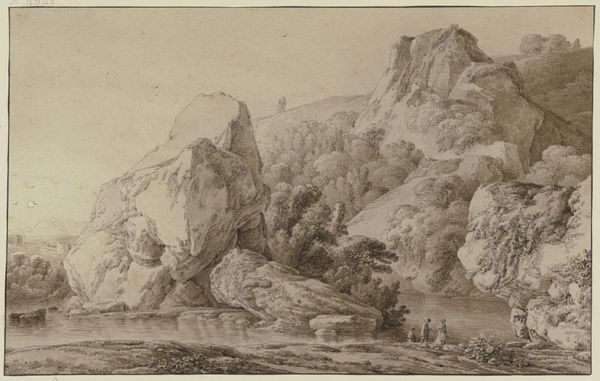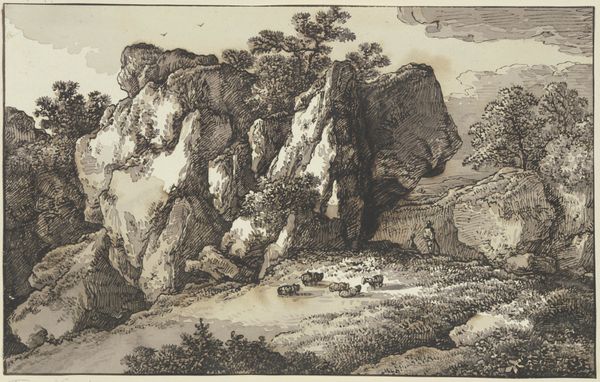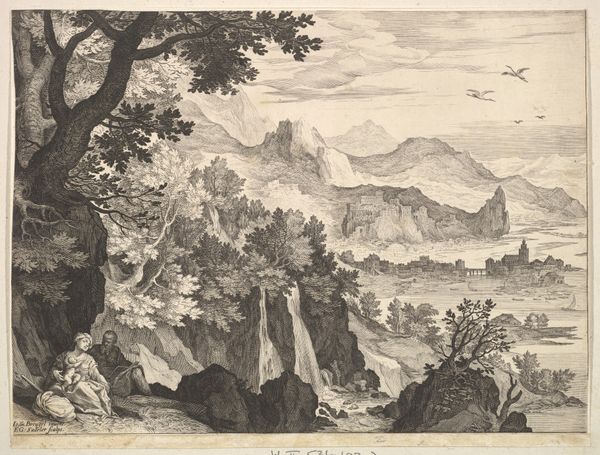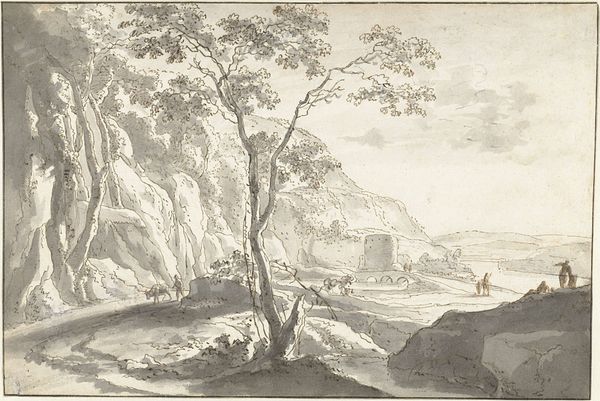
drawing, etching, ink
#
drawing
#
baroque
#
pen drawing
#
etching
#
landscape
#
ink
#
genre-painting
Dimensions: height 219 mm, width 278 mm
Copyright: Rijks Museum: Open Domain
Jan van Aken created this landscape with travellers using etching, a printmaking technique, sometime in the mid-17th century. With etching, a metal plate is coated in wax, and the artist draws through this layer to expose the metal underneath. The plate is then immersed in acid, which bites into the exposed lines, creating grooves. The plate is inked, and then wiped clean, leaving ink only in the etched lines. Damp paper is pressed against the plate, transferring the ink and creating the print. The fine, precise lines evident in this print speak to the level of control and skill required for this process. Etching allowed for a freedom of line not possible with engraving, which demands greater physical force. The many prints like this made in 17th-century Europe were more than just artworks. They functioned as a nascent form of mass media, allowing imagery and ideas to be disseminated widely, across lines of class and geography. So, when we consider this work, don’t just think about the picturesque scene it depicts. Consider, too, the innovative technology that made its reproduction possible.
Comments
No comments
Be the first to comment and join the conversation on the ultimate creative platform.

